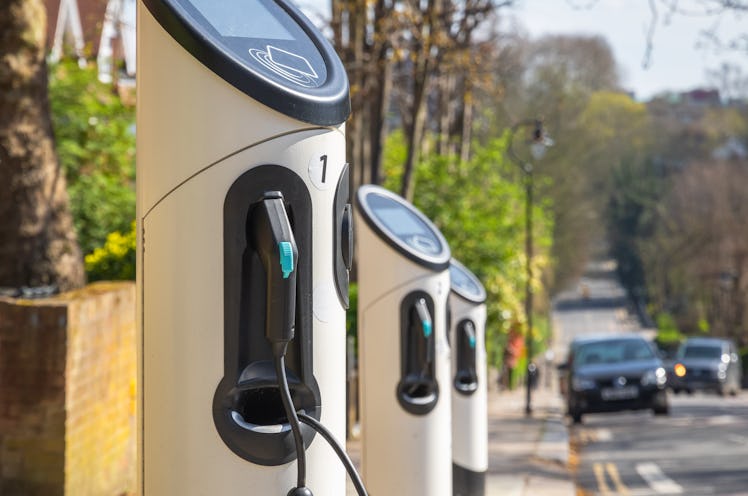This Interactive Map Of EV Charging Stations Around The U.S. Might Soothe Your Range Anxiety
With some 64,000 charging stations mapped in the U.S. and Canada, you can go far... very far.

So you want to buy an electric car, but you don’t want to end up marooned on a remote highway in the middle of a family road trip? If you’re concerned about the EV charging infrastructure across the U.S., you’re not alone: A 2022 OnePoll/Forbes survey found that 37% of EV owners have experienced some form of range anxiety, from travel to daily driving.
While it might seem like gas stations pop up every couple miles, EV chargers can feel few and far between. But an interactive map from the DOE — the Alternative Fueling Station Locator — highlighting the electric vehicle charging station locations across the United States and Canada may help put those concerns in perspective. When the map launched more than 20 years ago, there were just a few hundred chargers nationwide — there are now an estimated 55,000 public charging stations across the U.S. alone, with many more on the way, beginning next summer. (80% of all EV charging happens at home.)
“Range anxiety” is top-of-mind for many EV owners — and those considering the switch — especially following the news, this month, that Tesla was accused of exaggerating the driving range of its electric vehicles by creating algorithms that display overly optimistic range estimates on their dashboards, according to an exclusive report by Reuters, and news that EV drivers are very unhappy about the EV chargers that do exist — despite the massive build-out of the infrastructure itself.
But if range anxiety in particular is keeping you from buying an EV — or planning more ambitious road trips in your electric vehicle — consider this sea of 64,000+ green dots.
A map of the United States EV charging stations.
And new investments in the electric vehicle charging grid are on the way, with seven automakers — BMW, General Motors, Honda, Hyundai, Kia, Mercedes-Benz, and Stellantis — announcing their joint plans to install "at least" 30,000 high-speed EV chargers by 2030, with the first stations scheduled to open summer 2024, according to The Verge. This is in addition to the Department of Transportation's plans to allocate $7.5 billion to install hundreds of thousands more EV charging stations nationally, covering 165,722 miles and 49 states and the District of Columbia.
Each green point on the map represents one station. “A station appears as one point on the map, regardless of the number of fuel dispensers or electric vehicle supply equipment (EVSE) ports at that location,” the U.S. Department of Energy notes on the site.
Alternative Fuels Data Center map of Montana EV charging stations
The DOE’s map also offers handy route-planning tools that let you chart a course between any two destinations and that show current and pending alternative fuel corridors in the U.S. and Canada. For EV travel, a fuel corridor means DC fast electric vehicle charging stations with multiple ports that are no more than 50 miles apart, and no more than a mile from the highway.
The DOE’s alternative fuel corridor tool helps you find the best EV routes.
In many states, there’s a significant EV charging infrastructure already in place: California, Florida, New York, New Jersey, and Connecticut abound with charging stations. While less populous states like Montana, Kansas, and Idaho, do require bigger leaps between charging stations. Either way, the map that can help you plan your next long-distance EV road trip.
Bonus! This spring the National Renewable Energy Laboratory (NREL) used the “bones” of the DOE’s map and collaborated with the National Park Service to create an interactive map of charging stations at National Parks — themselves often remote destinations.
The DOE’s route-mapping tool lets you download a list of all EV charging stations along the way.
To see the full map, check out The U.S. Department of Energy interactive map.
This article was originally published on